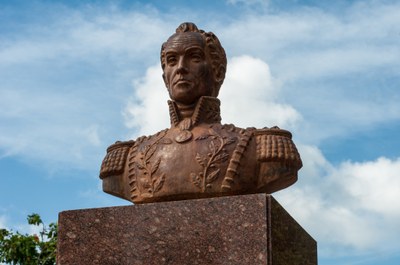Simón Bolívar (1783–1830)
by
—
last modified
2022-09-12T12:35:04+02:00
Creative Commons CC0 1.0 Universal Public Domain Dedication
Creative Commons CC0 1.0 Universal Public Domain Dedication
Simón Bolívar, bust in Punta de Piedras, Isla Margarita, Venezuela, sculptor unknown, colour photograph, 2012, photographer: Wilfredor; source: Wikimedia Commons, http://commons.wikimedia.org/wiki/File:Bust_of_the_Liberator,_Simon_Bolivar_at_Punta_de_Piedras.jpg, Creative Commons CC0 1.0 Universal Public Domain Dedication.
Decolonization and Revolution@Decolonization and Revolution@(BE)@freigabe
Global health in the colonial era: The expansion of European medicine@Global Health@(BE)@freigabe
International Social Movements Before 1945@International Social Movements@(ÜB)@freigabe
Mission, colonialism, and changing values@Mission, colonialism, and changing values@(BE)@freigabe

